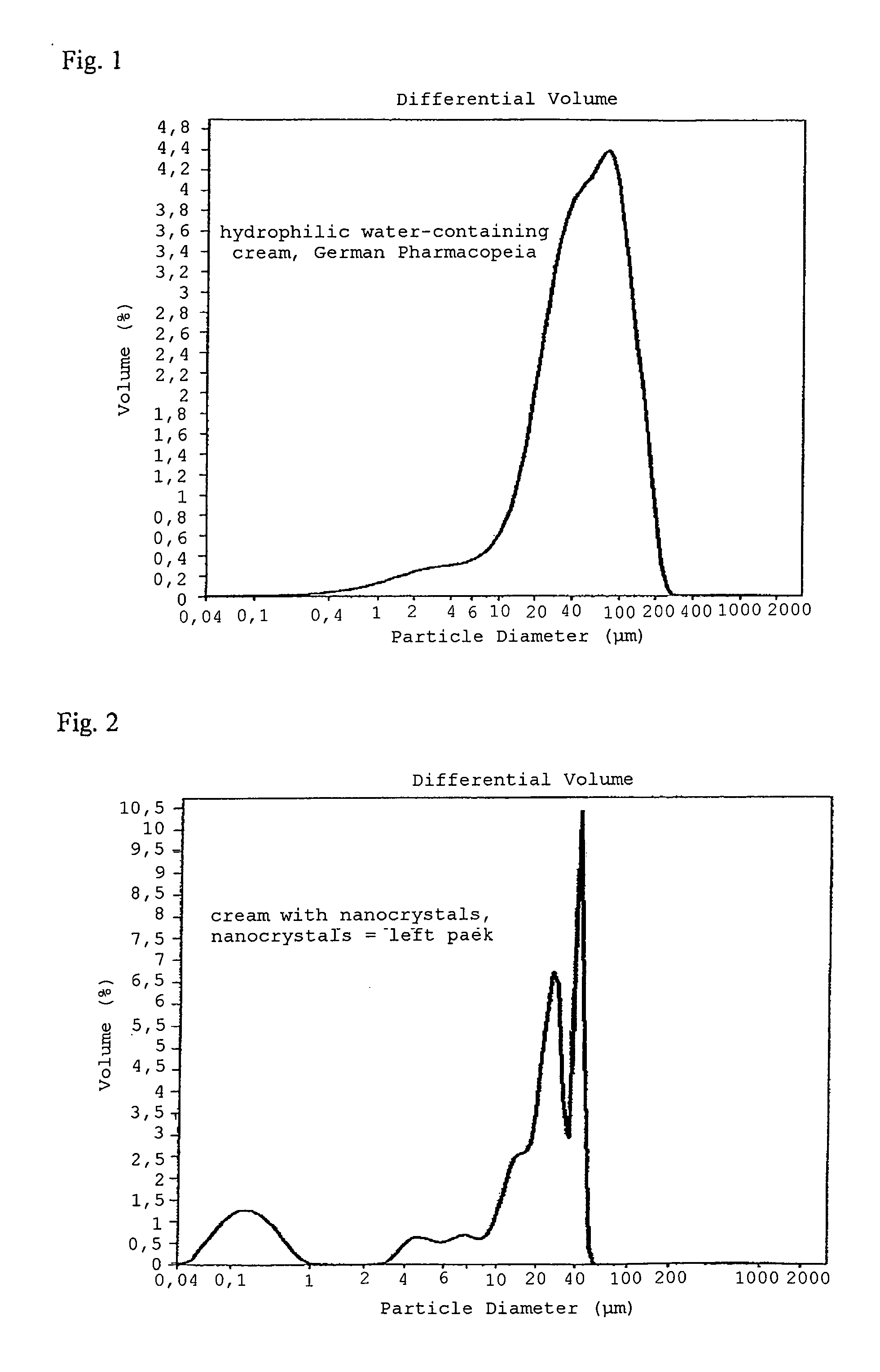Nanocrystals for use in topical cosmetic formulations and method of production thereof
a technology of nanocrystals and cosmetic formulations, which is applied in the direction of applications, biocide, heterocyclic compound active ingredients, etc., can solve the problems of insufficient in vivo effect, inability to achieve sufficient effect, and inability to use derivatives which are biologically distinctly less efficient but water-soluble or oil-soluble, so as to improve skin penetration
- Summary
- Abstract
- Description
- Claims
- Application Information
AI Technical Summary
Benefits of technology
Problems solved by technology
Method used
Image
Examples
example 1
[0037]Rutin nanosuspensions were produced by dispersing the Rutin powder in an aqueous solution of 1% surfactant. The dispersion was performed by using a rotor-stator stirrer T25 (ultra-turrax, Jahnke and Kunkel, Staufen, Germany), stirring for one minute at 8000 RPM. The obtained pre-suspension was then passed through a high pressure homogenizer Micron LAB 40 (APV Homogenizers, Unna / Germany). Applied were two homogenization cycles at 150 bar, 500 bar followed by 20 homogenization cycles at 1500 bar. The mean PCS diameter of the product was 783 nm, the polydispersity index 0.285. Laser diffractometry analysis (based on Mie theory) yielded a diameter 50% of 0.882 μm, a diameter 90% of 1.962 μm and a diameter 99% of 2.464 μm. Production was performed without temperature control. During production the temperature increased to about 60° C. When this temperature was reached, a cooling was performed to reach again room temperature. The increase of the temperature of the product did not le...
example 2
[0038]Hesperidin nanosuspensions were produced as described in example 1. The diameter of the bulk population determined by PCS was 599 nm, the polydispersity index 0.312. The LD results were diameter 50% 0.383 μm, diameter 90% 1.568 μm and diameter 99% 2.404 μm. No temperature control was applied during homogenization, aggregation problems did not occur during production despite heating up of the suspension.
example 3
[0039]Ascorbylpalmitate powder (6%) was dispersed in a solution of 0.3% Tween 80 using an ultra-turrax T25 (Jahnke and Kunkel, Staufen, Germany) at 8000 RPM for one minute. The obtained pre-suspension was homogenized using a Micron LAB 40 applying two homogenization cycles at 150, 500 and 1000 bar, respectively. After this pre-milling, 20 homogenization cycles were performed at 1500 bar. After 20 cycles at 1,500 bar, 0.7% Tween 80 were added to enhance the long-term stability of the nanosuspension, that means the total amount of Tween 80 in the formulation was 1.0%. The mean PCS diameter of the bulk population was 298 nm, the polydispersity index 0.234.
PUM
| Property | Measurement | Unit |
|---|---|---|
| Temperature | aaaaa | aaaaa |
| Temperature | aaaaa | aaaaa |
| Pressure | aaaaa | aaaaa |
Abstract
Description
Claims
Application Information
 Login to View More
Login to View More - R&D
- Intellectual Property
- Life Sciences
- Materials
- Tech Scout
- Unparalleled Data Quality
- Higher Quality Content
- 60% Fewer Hallucinations
Browse by: Latest US Patents, China's latest patents, Technical Efficacy Thesaurus, Application Domain, Technology Topic, Popular Technical Reports.
© 2025 PatSnap. All rights reserved.Legal|Privacy policy|Modern Slavery Act Transparency Statement|Sitemap|About US| Contact US: help@patsnap.com

